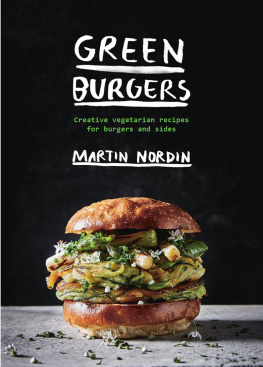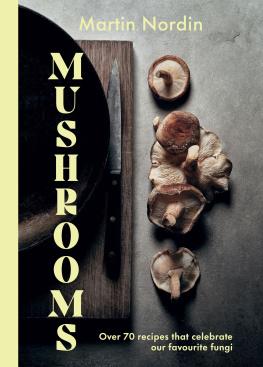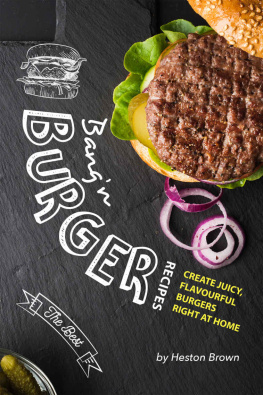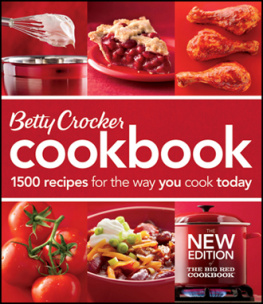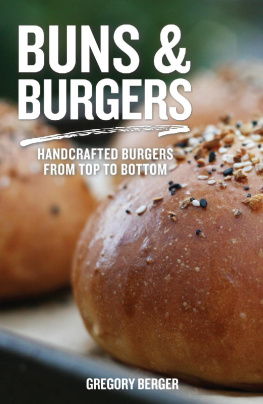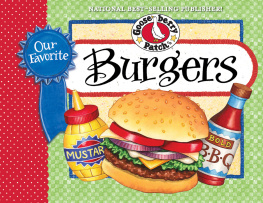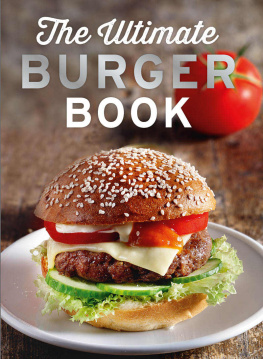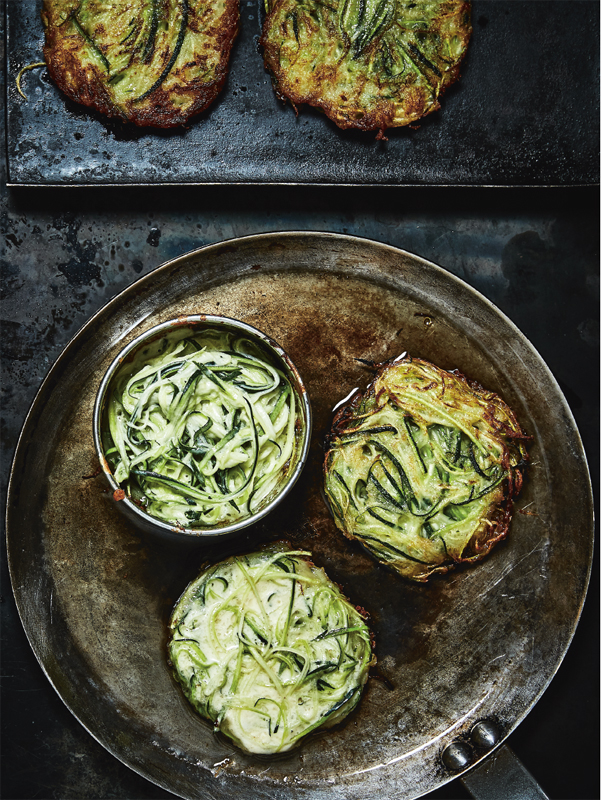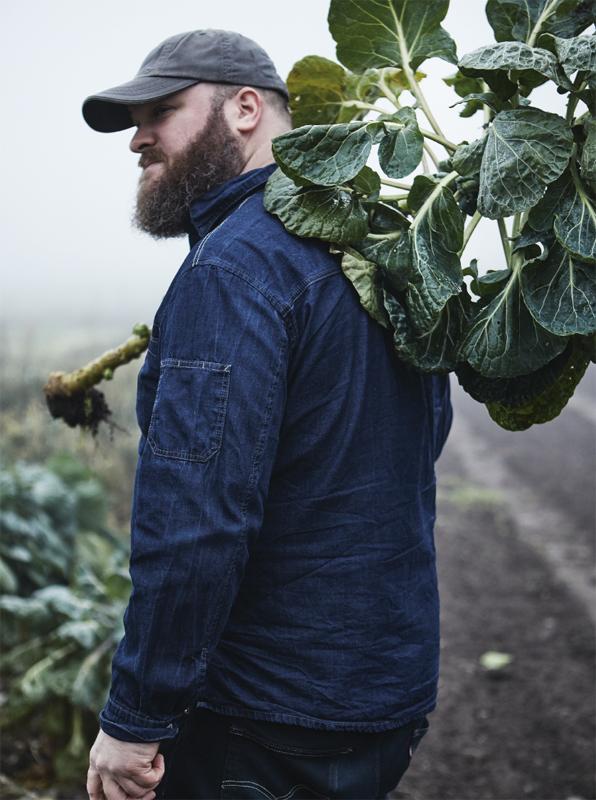[contents]
[preface]
When I first started thinking about this book, I was struck by how liberating and creative it is to devise, prepare and eat green burgers. Whereas a classic meat-based burger is indeed uncompromisingly classic this is what it looks like, this is how to prepare it, it has to be grilled no, actually fried... and then there are these accompaniments and nothing else, thats it what goes into a green burger is far less restricted. Theres not one classic you have free rein! Do what you want, experiment, go for it, question what a burger can be. See it as a sociable way of eating, informal and simple, and create things you like. I want to inspire you to have the courage to try out different variants, so you can then start to create your own favourite, try it out again, mix the accompaniments, discover something else and create a completely new favourite.
For me, its an ongoing process of cutting down on meat and eating fewer animal products overall. If you care about the environment, reducing your meat consumption is a no-brainer. But whats more, in recent years, Ive also learnt to appreciate vegetables in a completely new way. My focus has shifted away from ingrained patterns and preconceptions about what a meal should be like; I now take my own thoughts about flavour, consistency and composition as my starting point and ponder on them. (Personally Id welcome the death of the meat-centred model for a plate of food, once and for all.)
When I cook, the context is at least as important as the food. I like the whole idea of gathering around a meal and getting the opportunity to spend time with friends and family who are into eating and cooking and who like grazing, raw materials, tips and tricks. The best meals are the ones where everyone is part of the process; ideally there will be lots of accompaniments that are either prepared on site or that the guests bring with them as contributions, alternated with things that have been maturing for weeks. You can then create something together, with everyone adapting their plate to whatever excites them. Are you mad about that caramelised onion? Yes, so take an extra dollop and to hell with the pickled gherkins that I always used to remove when I ate burgers as a child. Or try them out and re-evaluate them! Be daring and try some pickled radish even if it smells a bit funky it tastes so great.

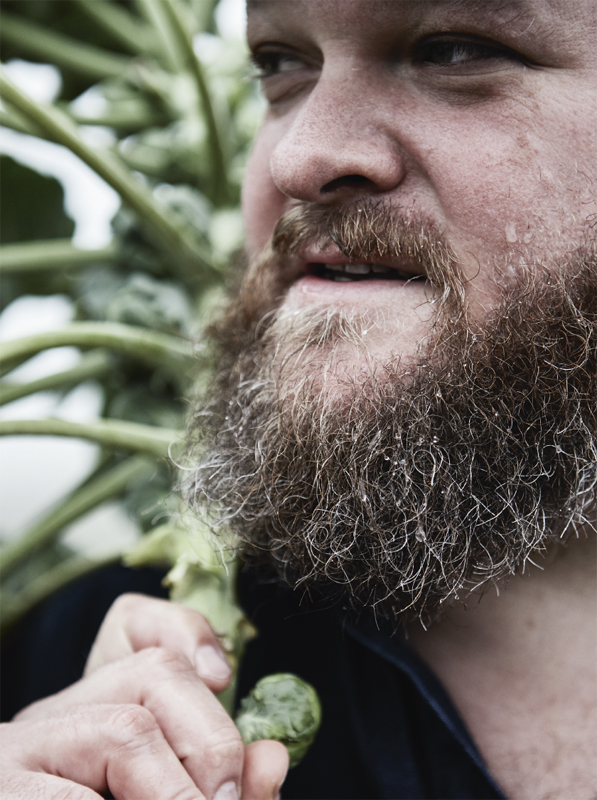
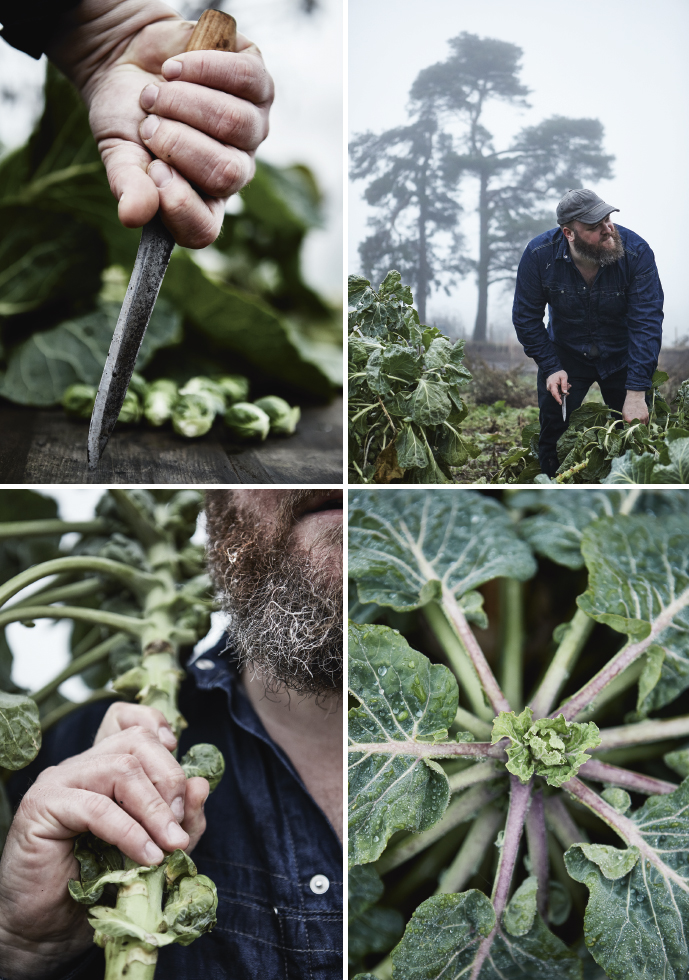
Many of the recipes in this book are inspired by dishes that Ive eaten and that have seemed ideal for deconstructing and reconstructing between two slices of bread. Just as with all cooking, the art lies in creating a wicked burger largely at the interface between different textures and flavours. Its all about balance. If the patty is deep-fried and crispy maybe youll need something acidic to counterbalance the greasy taste. If part of the burger seems on the dry side for example, if the patty is based on legumes maybe some mayonnaise would even things out.
The patty: Most patties improve if theyre left to rest in the fridge for a few hours before you cook them. Its a good idea to prepare bean patties the evening before, and then cook them for supper the day after. Patties for deep-frying are best if you freeze them first.
Lettuce leaves and other greens: Forget everything youve heard about lettuce always having to be at the bottom of the burger totally immaterial if you ask me. For my part, I think theres often a bit too much of an emphasis on lettuce there are, after all, quite a lot of other greens in these burgers.
The bun: Ive used several different buns for burgers, and youll find my favourite ones in the chapter. The choice of bun should be based on the flavour of the patty. A slightly sweeter brioche bun goes excellently with a salty bean patty, whilst a patty made of Jerusalem artichokes which are slightly sweet would maybe go better with a crispy bun based on poolish (a kind of starter). Or just leave out the bun entirely and serve the patty in a lettuce leaf instead.
The sauce: If the recipe includes mayonnaise, ketchup, a herb sauce or a creamy miso sauce, this is to contribute juiciness or counterbalance acidity. I usually serve the sauce on the side, so everyone can add it according to their own taste.
Fresh herbs: Do sprinkle on plenty of fresh herbs maybe even instead of lettuce leaves. Is the herb in flower? Make use of that! Most herb flowers are edible and create a further dimension both flavour-wise and visually.
[good utensils]
You can easily go over the top with special utensils, but there are good ones that I simply find it hard to do without when Im cooking.
Knife: A good (and nice-looking!) knife. Keep it sharp and, whatever you do, always wash it by hand!
Food ring: A food ring is unbeatable for shaping perfect bean patties, and it also helps hold together patties that would otherwise easily spread over the frying pan (skillet). Buy food rings in different sizes so you can adjust the patty size to the bun size.
Grater: Invest in a really good grater for small jobs such as grating lemon zest, cheese or truffles. I ve tried out several makes, but nothing beats the Microplane.
Digital scales: Sometimes, such as when baking, you simply need more precise weights, and thats where digital scales come in.
Digital thermometer: Theres a huge range on the market, but many of them are absolutely useless. Loads of them have packed in on me, so invest in a really good one. Essential for deep-frying, but also good for checking that the patties are cooked through.
Wooden spoon: For scraping up stuff that otherwise easily sticks to the bottom of the saucepan, a wooden spoon is unbeatable.
Salad spinner: Good for removing liquid from beans or getting lettuce crispy after an ice bath.
Slotted spoon: Essential for deep-frying for pushing round, turning and lifting things out.
Flat griddle pan: Cooking bean patties on a grill can be tricky they easily get stuck, and after a while half the burger will have fallen through the bars. Buy a flat griddle pan and brush the patties generously with some oil problem solved!
Spatula: Handy when you want to get that little bit more out of the bowl.
Mandoline: To get really thin slices and julienne strips. For me, its nearly as important as a good knife.
Kitchen tweezers: For twirling up potato strips, lifting a sage leaf out of the fryer or just removing something. You never know when youll need them, so have them close at hand.
Washing-up brush: Having things clean and ship-shape on the draining board and washing up as you go whilst cooking are at least as important as having all the ingredients in place when you start off.

